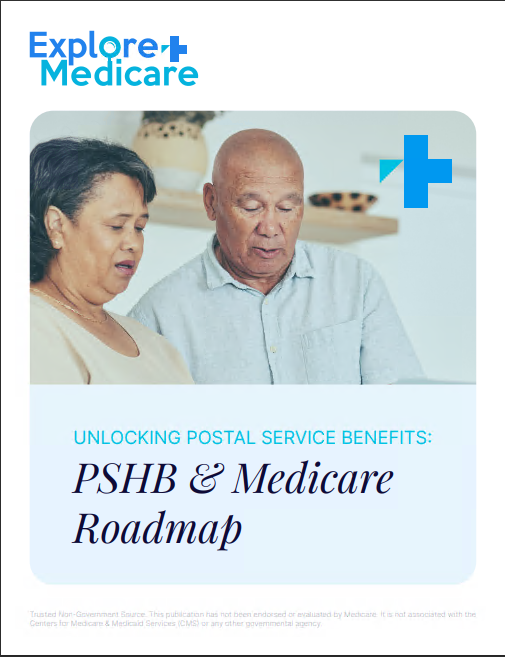Key Takeaways
-
In 2025, Medicare Part D introduces an out-of-pocket prescription drug cost cap of $2,000, helping reduce the financial burden for beneficiaries.
-
Despite this improvement, issues such as high premiums, plan complexity, and coverage restrictions still pose challenges.
What Medicare Part D Covers in 2025
Medicare Part D provides prescription drug coverage to anyone enrolled in Medicare. In 2025, the structure of this coverage sees a significant transformation aimed at improving affordability and predictability.
Standard Benefit Structure for 2025
The standard Part D benefit in 2025 includes the following stages:
-
Deductible Phase: You pay 100% of drug costs until you meet your plan’s deductible, which can be up to $590.
-
Initial Coverage Phase: After meeting the deductible, your plan pays a portion of your drug costs while you pay copayments or coinsurance. This continues until your total drug costs (including what the plan pays) reach a set threshold.
-
Catastrophic Coverage Phase: In 2025, the previous cost-sharing in this phase is replaced by a firm $2,000 out-of-pocket spending cap. After you hit this amount, the plan pays the rest of your drug costs for the year.
Elimination of the Donut Hole
Before 2025, many Medicare beneficiaries encountered a coverage gap often referred to as the “donut hole.” Although technically closed in 2020, high out-of-pocket costs still applied during that middle phase. In 2025, that burden is eliminated with the $2,000 cap, providing true financial relief.
How the $2,000 Cap Actually Works
The $2,000 out-of-pocket cap applies to what you pay out-of-pocket for covered prescription drugs, including:
-
Deductibles
-
Copayments
-
Coinsurance
Once your spending reaches $2,000 within the calendar year, you pay nothing more for covered drugs for the rest of the year. This includes drugs purchased at in-network pharmacies and those delivered through mail-order services.
This cap is not plan-specific. It applies universally across all Part D plans in 2025.
Monthly Payment Option: Prescription Payment Plan
To complement the out-of-pocket cap, a new monthly payment option has launched: the Medicare Prescription Payment Plan.
What It Does
This plan allows you to spread your out-of-pocket drug costs over the calendar year rather than paying large amounts at once when filling high-cost prescriptions.
-
Enrollment is optional but can ease financial pressure.
-
Payments are evenly divided across the year based on your projected expenses.
If you opt in, you’ll pay monthly instead of immediately paying full out-of-pocket costs.
Pitfalls That Still Linger
Even with improvements, Medicare Part D still comes with a series of drawbacks that can surprise you if you’re not prepared.
1. Wide Variation in Plan Details
Although the $2,000 cap is standardized, plan designs vary widely:
-
Some plans include low deductibles but higher premiums.
-
Others have broader pharmacy networks or cover more medications.
These differences make it difficult to compare plans without carefully reading each plan’s details. You need to consider premiums, covered drugs (formularies), and cost-sharing structures.
2. Formulary Restrictions and Tiered Coverage
Every Part D plan has a formulary—a list of covered drugs—and not every medication is included. Drugs are also sorted into tiers, and:
-
Lower-tier drugs have lower copays.
-
Higher-tier or specialty drugs may involve higher costs even before hitting the $2,000 cap.
If your prescription isn’t on your plan’s formulary, you may have to pay full price or request an exception.
3. Prior Authorization and Step Therapy
Some Part D plans require extra steps before covering certain medications:
-
Prior authorization means you need approval from the plan before a drug is covered.
-
Step therapy requires trying a lower-cost alternative first.
These can delay access to needed medications and create administrative challenges for both you and your healthcare provider.
4. Premium Costs Aren’t Capped
While the $2,000 limit applies to your out-of-pocket drug costs, it does not limit your monthly premiums. In 2025:
-
Premiums continue to vary widely by plan.
-
People with higher incomes may pay an extra surcharge (IRMAA).
This means that even if you’re protected from high drug costs, your ongoing monthly costs can still be substantial.
5. Plan Changes Every Year
Each year, Part D plans can change:
-
Covered drugs
-
Cost-sharing levels
-
Network pharmacies
If you don’t review your plan during the Annual Enrollment Period (October 15 to December 7), you might find that your medication is no longer covered or your costs have risen in the new year.
6. Penalties for Late Enrollment
If you don’t enroll in Part D when you’re first eligible and don’t have creditable drug coverage elsewhere, you may face a permanent late enrollment penalty. This is calculated based on the number of months you delayed, and it gets added to your premium—month after month, year after year.
Who Benefits Most in 2025
The 2025 updates to Medicare Part D are especially helpful for:
-
Beneficiaries with high prescription drug costs, who previously faced thousands in out-of-pocket costs.
-
People on fixed incomes, who now have the option to spread drug costs across the year.
-
Those with chronic conditions, who are more likely to reach the $2,000 cap early in the year.
However, if your prescriptions are mostly low-cost generics or you rarely use medications, the benefits might be less noticeable—though the overall protections are still valuable.
Enrollment Periods to Remember
It’s crucial to be aware of the official timelines so you can make informed choices:
-
Initial Enrollment Period: A 7-month window around your 65th birthday (3 months before, the month of, and 3 months after).
-
Annual Enrollment Period (AEP): October 15 to December 7. This is when you can switch Part D plans or join for the first time.
-
Special Enrollment Periods (SEPs): Triggered by specific life events like losing employer coverage, moving, or qualifying for Medicaid.
Missing these deadlines can lead to gaps in coverage or long-term penalties.
Questions to Ask Before Choosing a Part D Plan
To choose wisely, you should consider more than just the premium. Ask yourself:
-
Are my prescriptions on the formulary?
-
What is the deductible?
-
How much will I pay for each drug tier?
-
Are my pharmacies in-network?
-
Is prior authorization required for my drugs?
-
Does the plan support the new monthly payment option?
A licensed agent listed on this website can help walk you through these questions and compare plans in detail.
Why It’s Still Worth Reviewing Your Plan Annually
Even with the new protections in place, your health needs and the Part D landscape can change every year. Regular review ensures that:
-
You avoid unnecessary out-of-pocket costs.
-
Your current medications remain covered.
-
You are enrolled in a plan that aligns with your current medical needs and financial situation.
Understanding the Balance Between Predictability and Flexibility
The 2025 changes to Medicare Part D aim to create predictability. But flexibility—choosing the plan that works best for you—still depends on careful attention to the fine print. Without that, you risk:
-
Unexpected exclusions
-
Higher-than-anticipated copays
-
Limited pharmacy access
Staying Ahead of the Curve in 2025
With the $2,000 cap and new monthly payment option, Medicare Part D is more user-friendly than in previous years. But the responsibility to choose well still rests with you.
Your next best step? Review your current coverage, understand the new rules, and speak with a licensed agent listed on this website to get the help you need.









